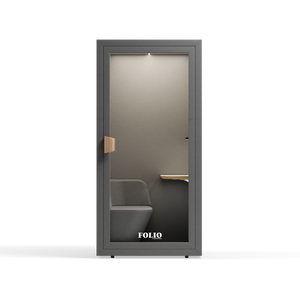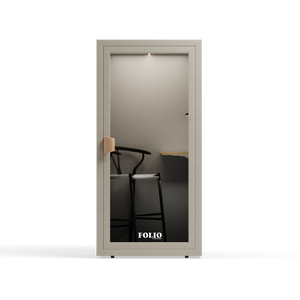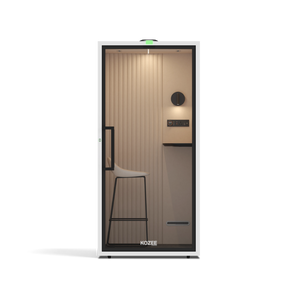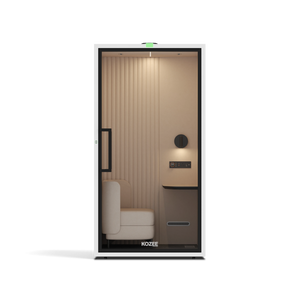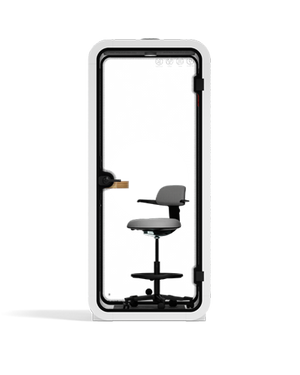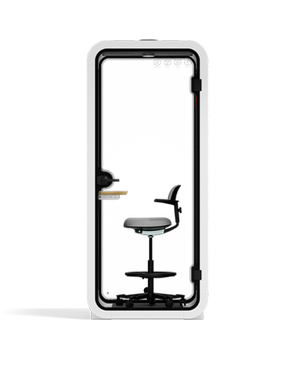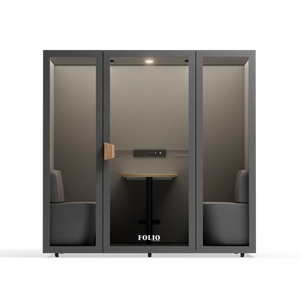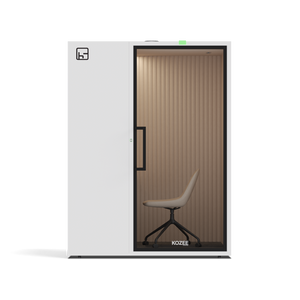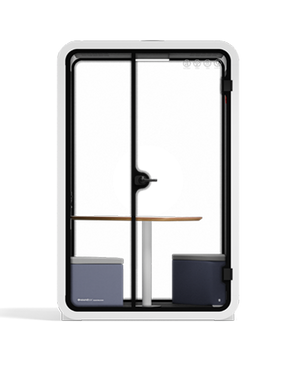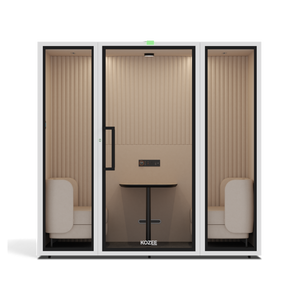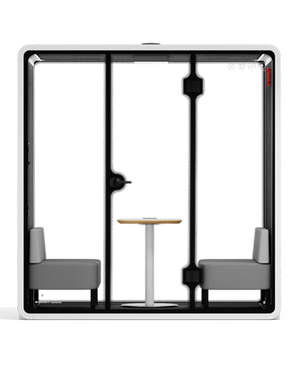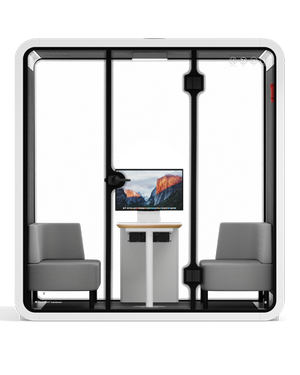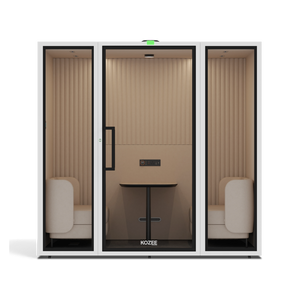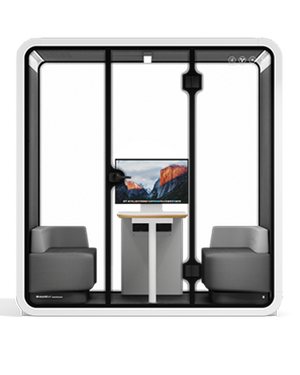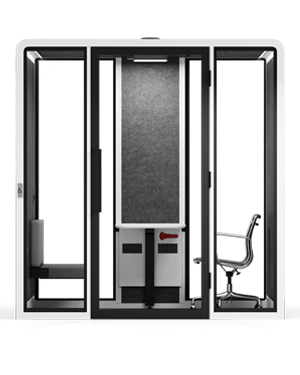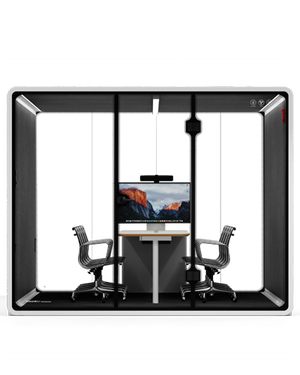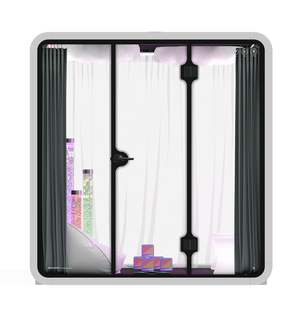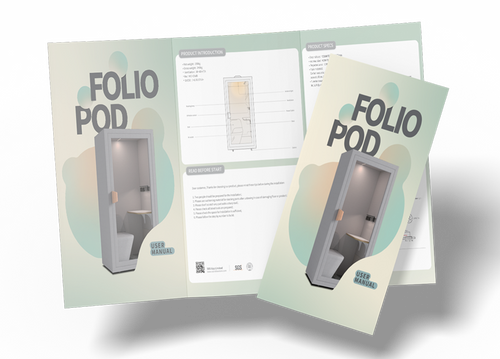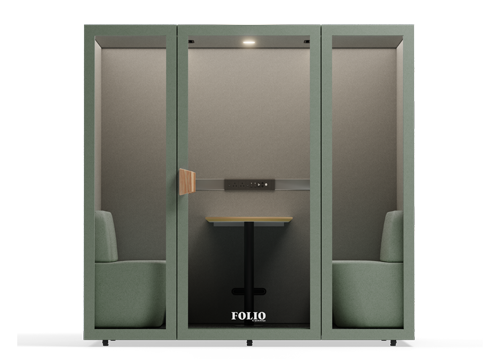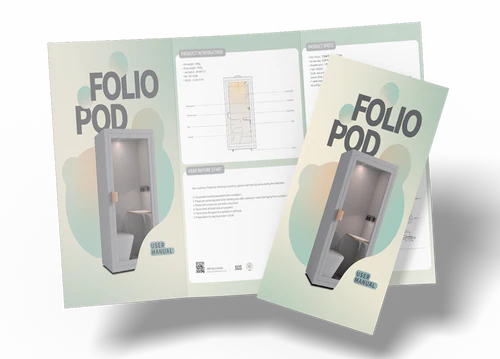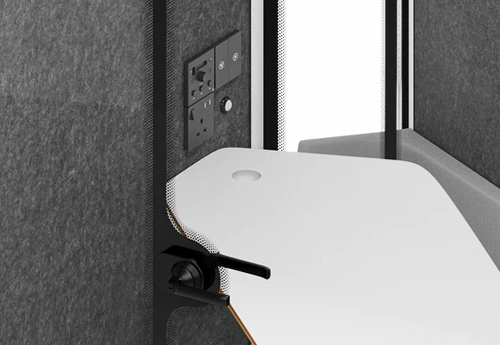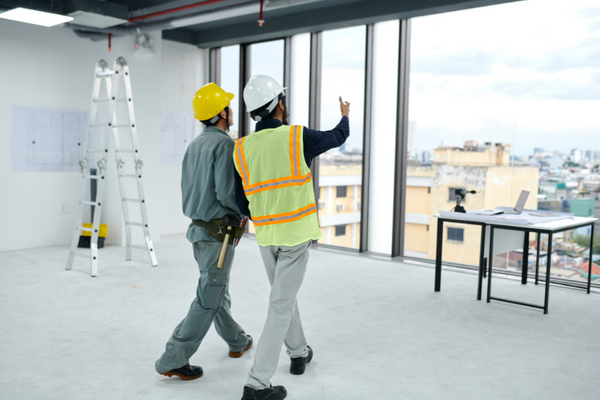Top 5 Acoustic Mistakes in Workspace Design (And How to Fix Them)
Designing a workspace that looks the part is one thing — but if it sounds like a cattle market every time someone takes a call, it’s hardly the pinnacle of productivity.
From clanging echoes to conversations that carry three desks over, poor acoustic planning can quietly (ironically) derail even the most beautiful office. Yet, it’s one of the most overlooked elements in workplace design. Out of sight, out of mind — until your team starts wearing noise-cancelling headphones like part of the dress code.
Here in the UK, we’ve embraced open-plan layouts like we invented them. And while the benefits are real — collaboration, flexibility, a shared buzz — we’ve also inherited a host of acoustic issues that no amount of trendy furniture can hide. The truth is, many modern offices are all style, no silence. It’s like putting a Rolls-Royce engine in a Mini and wondering why it rattles.
But fear not — this isn’t about tearing it all down and starting again.

It’s about spotting the clangers early and making a few clever tweaks that go a long way. We’ve seen the same slip-ups again and again — the hard surfaces that turn every footstep into a drumbeat, the glass boxes that double as echo chambers, and the so-called ‘quiet zones’ parked next to the kitchen. It’s no wonder teams are feeling frazzled before 11am.
The good news? Every one of these acoustic faux pas has a fix — and no, it doesn’t involve bricks, scaffolding or locking the chatty accounts team in a broom cupboard. At Quell Design, we’re all about practical, design-led solutions that slip into your space without making a song and dance. And when you get it right, it’s not just about silence — it’s about clarity, comfort, and creating a space that lets people thrive.
In this blog, we’re lifting the lid on the top five acoustic mistakes we see time and again in workplace design — and, crucially, how to fix them. From layout missteps to material mishaps, we’ll help you fine-tune your space without knocking it down or burning through your budget.
So, grab a cuppa, settle in, and let’s take a look at what’s going wrong — and how you can turn the volume down without missing a beat.
1. Too Many Hard Surfaces, Not Enough Soft Thinking
Modern offices often boast sleek designs with polished concrete floors, expansive glass walls, and minimalist metal furnishings. While visually appealing, these hard surfaces can wreak havoc on acoustics. Sound waves bounce off these materials, leading to increased reverberation and a cacophony of noise that hampers concentration and communication.
Research shows that environments dominated by hard, reflective surfaces can significantly elevate noise levels, making it difficult for employees to focus and communicate effectively. This not only affects productivity but also increases stress and fatigue across the board.
To mitigate these issues, it’s essential to incorporate sound-absorbing materials into the office design. Introducing elements like acoustic wall panels, ceiling baffles, and soft furnishings can help dampen sound reflections. Additionally, adding carpets or rugs absorbs footfall noise, further reducing the overall din.
Sound-Softeners to Consider:
- Introduce Soft Furnishings: Use upholstered chairs, sofas, and cushions to absorb sound.
- Use Acoustic Panels: Install wall-mounted or ceiling-hung panels to reduce echo.
- Add Carpets or Rugs: Especially in high-traffic areas, to quieten footstep noise.
- Incorporate Plants: They not only look great but help absorb sound too.
- Opt for Acoustic Ceiling Tiles: Swap out standard tiles for sound-rated options.
By thoughtfully integrating these materials, you can transform a noisy, echo-prone office into a more peaceful environment where people can actually think straight.

Of course, surfaces are just the start — because even if your materials are spot on, the way you arrange your space can throw a proper spanner in the works. Let’s move on to the next pitfall: poor layout planning that turns offices into echo chambers and breakout zones into battlegrounds.
2. Poor Layout Planning: When Open Plan Becomes Open Pain
Open-plan offices are celebrated for fostering collaboration and flexibility. However, without thoughtful layout planning, they can quickly devolve into noisy, distracting environments. Positioning high-traffic areas like break rooms or collaborative zones adjacent to quiet workspaces can lead to constant interruptions and a lack of concentration.
Research indicates that poor spatial planning in open-plan offices can amplify background noise and negatively affect employee performance and wellbeing.
To fix this, it’s all about zoning — dividing your workspace based on use, function, and expected noise levels. Keeping quiet areas shielded from noisier communal spots helps minimise disruption, while strategic placement of enclosed spaces creates natural acoustic buffers without overhauling your floor plan.
Smart Layout Fixes:
- Designate Specific Zones: Define areas for collaboration, focused work, and relaxation.
- Use Zoning Furniture: Think bookcases, planters, or modular seating — subtle separators without full partitions.
- Use Furniture to Guide Flow: Position desks, shelving, and soft seating to reduce cross-traffic noise.
- Integrate Soundproof Booths: Add enclosed meeting booths to provide privacy and peace.
Regularly Review Layout: Adapt your setup based on team feedback and workflow shifts.
By planning your office layout with sound in mind — and using furniture that works double duty — you can strike a balance between buzz and focus. No major renovations, no drama, just a space that works harder for the people in it.

Even with the right materials and a well-zoned layout, there’s one sneaky saboteur that often gets overlooked — the kind you can’t see, but definitely hear. Let’s talk about how forgetting the ceiling can come back to haunt your acoustics.
3. Ignoring the Ceiling: The Overhead Offender
Even with the right materials and a well-zoned layout, there’s one sneaky saboteur that often gets overlooked — the kind you can’t see, but definitely hear. Let’s talk about how forgetting the ceiling can come back to haunt your acoustics.
In many modern offices, especially those with exposed beams or a stripped-back industrial feel, the ceiling gets left bare. Sure, it looks trendy. But all that hard surface overhead acts like a giant echo chamber, bouncing noise back into the space and amplifying the daily din. It's a recipe for reverberation — and not the good kind.
According to research, open ceilings and untreated overhead spaces significantly elevate background noise, making it harder for teams to focus, communicate, or think straight. A study published by the National Center for Biotechnology Information highlights the importance of optimizing acoustic materials in office buildings to enhance productivity and employee well-being.
The fix? Bring the ceiling into the conversation. Installing acoustic ceiling panels is one of the most effective ways to absorb ambient sound and stop it from ricocheting around the room. You can also explore ceiling baffles or suspended clouds — stylish, sculptural features that do more than just look good. They're ideal for targeting noisy zones like collaborative areas or high-traffic walkways. The best part? They slot into most existing ceiling systems without much disruption.
By treating the ceiling with the same attention you’d give the walls or layout, you gain a crucial layer of sound control — one that can dramatically shift the mood and functionality of your workspace. After all, what’s the point in creating zones and layering soft materials if the ceiling’s still shouting at you?

Now that we’ve dealt with what’s hanging over your head, let’s turn our ears to what’s often right under your nose — the everyday noise that slips through the cracks when privacy isn’t properly planned.
4. Overlooking Acoustic Privacy: When Conversations Carry Too Far
We’ve all been there — trying to concentrate while someone across the room is deep into a sales call, spilling every last KPI into the open air. In an office where every word travels, privacy goes out the window faster than you can say “Can we take this offline?”
One of the most overlooked elements in workspace acoustics is conversational privacy. It’s not just about volume — it’s about control. When every chat, call, or sensitive discussion echoes around the office, you end up with distractions, reduced focus, and, let’s face it, a few too many overheard HR conversations.
According to Workplace Insight, lack of speech privacy is a top concern in open-plan offices, directly impacting productivity, confidentiality, and staff satisfaction. In an age of hybrid working, where teams need to collaborate and concentrate in the same space, privacy isn’t a luxury — it’s essential.
That’s where soundproof meeting booths come in. Rather than trying to hush the whole room, give your team spaces they can escape to — whether it’s for focused work, private conversations, or just a moment away from the buzz. Acoustic booths let the chatter continue elsewhere without putting productivity on the line. They're stylish, modular, and a lot less hassle than reconfiguring an entire floor plan.

But even with all the right materials, layouts, and private spaces in play, there’s one more misstep that can throw everything off — and it has less to do with what you choose, and more to do with how (or if) it all gets used. Let’s wrap things up with a classic: treating acoustics as an afterthought.
5. Treating Acoustics as an Afterthought: The Silent Saboteur
All too often, acoustic design is the last item on the office checklist — somewhere between choosing the coffee machine and ordering desk plants. It’s easy to get caught up in the visual bits: the layout, the branding, the fancy lighting. But when the office is up and running, and the noise starts bouncing off every surface like a game of pinball, it becomes painfully clear — acoustics should never be an afterthought.
What’s tricky is that poor acoustics don’t always shout for attention. They’re the subtle saboteur. A rise in background noise here, a spike in stress levels there. People zone out, concentration dips, and suddenly your beautifully designed workspace isn’t quite delivering the productivity punch it promised. It's not just about hearing — it’s about thinking, processing, and working without interruption.
According to the UK-based Work in Mind, poor acoustics directly impact wellbeing, productivity, and staff satisfaction. And yet, acoustic strategy is often brushed aside in favour of flashier fixes. The irony? Getting sound right could be the simplest way to unlock better performance across the board — with far less effort than a complete office refit.
It’s not about creating a silent, padded cell either. It’s about control — being able to hold a meeting without disturbing the whole floor. About offering spaces where deep work can happen undisturbed, and providing balance between buzz and quiet. A well-tuned office doesn’t just look good — it feels good. And staff will notice the difference long before they spot the designer light fittings.
So, what’s the fix? Treat acoustics like any other core design element. Think about it early, build it into the bones of your space, and select modular solutions that flex with your needs. Soundproof booths, acoustic ceiling treatments, smart zoning with upholstered furniture — they all stack up to create a workspace that isn’t just beautiful, but genuinely functional.
Because at the end of the day, a good-looking office that doesn’t support focus or comfort is just that — a look. Acoustics aren’t a luxury add-on; they’re a baseline for modern working. Get them right, and you won’t just hear the difference — you’ll feel it in productivity, morale, and the quiet hum of a space that works.
Ready to Rethink the Sound of Your Space?

Acoustic design isn’t about silencing the office — it’s about creating the right kind of sound for the right kind of work. And as you’ve seen, the most common mistakes are often the easiest to fix when you’ve got the right tools (and a bit of design nous).
At Quell Design, we build spaces that don’t just look brilliant — they sound better too. From modular acoustic panels to soundproof meeting booths that slot right in without a fuss, we make it simple to transform the way your workplace feels.
So, if you’re ready to turn down the noise and dial up the focus, let’s talk. Because a better acoustic environment isn’t a pipe dream — it’s just good design, done thoughtfully.


